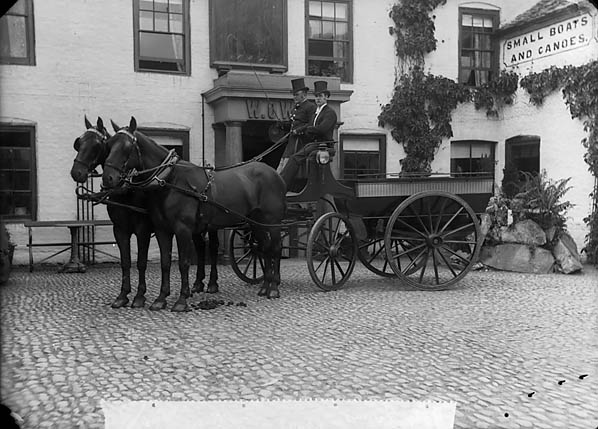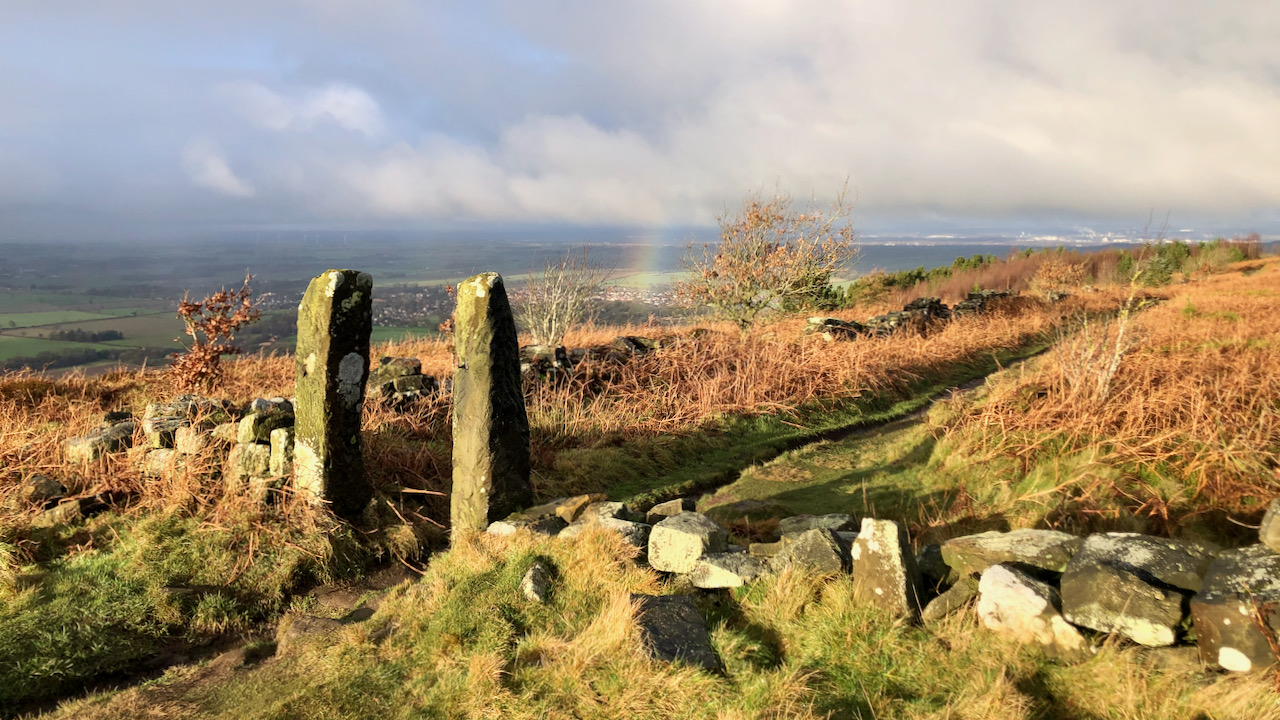On a morning with ever-changing atmospheric conditions, I found myself in pursuit of that elusive sun. The weather played tricks, switching between drizzle and dullness one moment, and dazzling sunlight accompanied by rainbows the next. Thus, an opportunistic approach in selecting a photograph for today’s posting.
This pair of ‘yat stoops‘ located on Easby Bank has appeared in many photographs, mine included, typically captured from the opposite direction, framing Capt. Cook’s Monument.
The ruined dry-stone wall served as the parish boundary separating Little Ayton and Easby. Its age is evident, appearing on the O.S. 1856 map, which also defines Easby Bank as being the entirety of this south-west facing slope.
This reference to Easby Bank has triggered a recollection of an incident I stumbled upon while combing the newspaper archives, a story that found its way into national syndication1‘A Cleveland Disaster. | Shields Daily News | Monday 25 August 1884 | British Newspaper Archive’. 2024. Britishnewspaperarchive.co.uk <https://www.britishnewspaperarchive.co.uk/viewer/bl/0001168/18840825/051/0003> [accessed 10 January 2024].
On a Friday evening in August 1884, as a horse-drawn carriage, known then as a ‘brake,’ carrying 30 children from the Boundary Road Calvinistic Methodist Sunday School in Middlesbrough, made its way back from an excursion to Capt. Cook’s Monument, a rear wheel disintegrated while descending Easby Bank.

The outing entailed nearly a hundred scholars, teachers, and friends who proceeded in four of these brakes to Kildale and from there to the Monument. On the homeward journey, one overturned, and its occupants, around thirty children and adults, were thrown into a heap on the road. A woman and a boy were found to be unconscious. One girl had her right hand so severely crushed that upon reaching Middlesbrough, she was taken to the North Riding Infirmary, where two of her fingers had to be amputated. Another boy received treatment for an injured arm and internal injury, while a girl suffered a dislocated arm. The remaining individuals primarily sustained bruises about the head and face.
The accident’s whereabouts pose a tad bit of confusion. The report indicates that the brake descended from Easby Bank to Kildale. Presuming its approach route, it likely used the track depicted on the old map along Coate Moor, leading to a small quarry just below and to the east of the monument. This route aligns roughly with the modern Cleveland Way and the tarmac road from Kildale to Lounsdale. However, this is not Easby Bank.
- 1‘A Cleveland Disaster. | Shields Daily News | Monday 25 August 1884 | British Newspaper Archive’. 2024. Britishnewspaperarchive.co.uk <https://www.britishnewspaperarchive.co.uk/viewer/bl/0001168/18840825/051/0003> [accessed 10 January 2024]

Leave a Reply